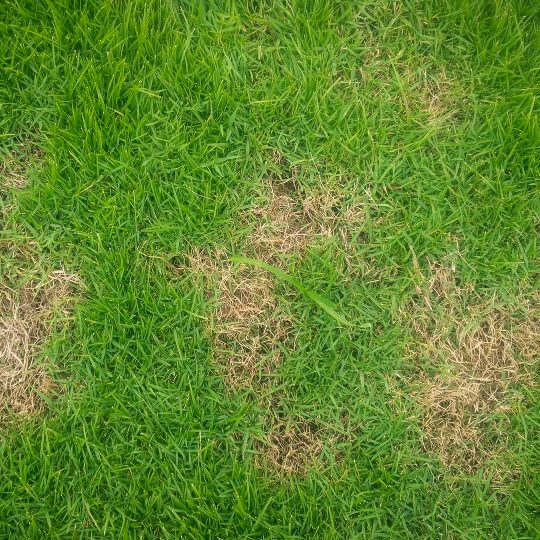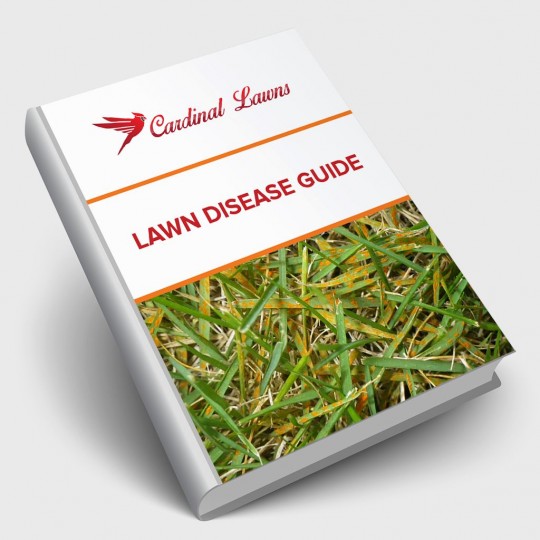Prevent Lawn Disease in 3 Easy Steps
Plus Signs of Disease to Watch Out For
Posted
November 3, 2022

While winter may not be the first thing on your mind now, your grass is trying to prepare for it. This is why the fall is the best time to provide your lawn with what it needs to store enough energy to make it through the upcoming season unscathed. Here are a few maintenance tips on how to prevent lawn disease.
Is There Ever an Off Season?
Before we get to preventative measures, let’s break the bad news first. Lawns need regular maintenance throughout the year. There’s mowing in the spring and fall, watering in the summer, and applying winterizing fertilizer. No matter the season, there’s something you can do to help keep your lawn healthy.
Even when lawns go dormant in the winter and there’s not as much maintenance, you should still be aware of keeping harsh snow-removal chemicals off the grass and taking notice of any areas of poor melting snow drainage.
Not only is a healthy lawn a happy lawn, but it’s also in better shape to make it through times of summer drought and winter dormancy and bounce back better than ever. The key is regular maintenance.
How to Prevent Lawn Disease
Before we review some of the most common lawn diseases, let’s rejoice in the good news. There are ways to help protect your lawn. Think of it as trying to boost your lawn’s immunity. Just as you would eat a healthy diet and hydrate to help maintain your health, your grass needs these things too.
- Did you know you can get exercise and help your lawn too? It’s called mowing. Bonus: you can start tapering off your regular mowing schedule since your grass isn’t growing as fast the closer it gets to winter. You want to keep your grass at the right height to prevent pests from hiding in tall blades and fungus from growing.
- Provide your lawn and garden with enough nutrients in the form of fertilizer and mulch. Fall is a great time to fertilize and revitalize a lawn from the summer heat. Use a slow-release formula that will last throughout the winter. If you have a weed problem, there are also weed and feed products that can multitask.
- While your lawn still needs moisture, it doesn’t need as much this time of year. Morning dew helps, but if you’ve just reseeded you’ll need to make sure it gets enough water for the grass seeds to germinate. But not too much water. Too much can lead to pest infestation and fungus—some of the main causes of lawn disease.
Types of Lawn Disease
Even though grass goes dormant in the winter, it can still contract a disease if conditions are right. Many of these diseases are caused by excessive moisture, inadequate nutrition, and thatch. Some of these diseases include:
- Dollar Spot. Small, pale patches.
- Red Thread. Bleached or red patches that show up in the grass or on your shoes and mower.
- Brown Patch. As the name suggests, circular brown patches appear.
- Anthracnose. Irregular reddish-brown patches.
- Fairy Ring. Mushrooms appear.
- Rust Lawn. Rusty-yellow specks on thinning grass blades.
Just as these diseases have similar causes and symptoms, they also have the same treatment option: you guessed it, regular maintenance. Proper mowing, watering and fertilizing plays a major role in lawn health. Occasional aerating and reseeding when needed is also a plus. Fungicides can help treat certain conditions, but maintaining a healthy lawn can prove to be more effective.

Download Your FREE Lawn Disease Guide
Even the most manicured landscapes are susceptible to lawn disease. Take some time to learn about identification and removal before one takes over your lawn. This handy guide teaches you how to spot common lawn diseases as well as how to properly treat them.